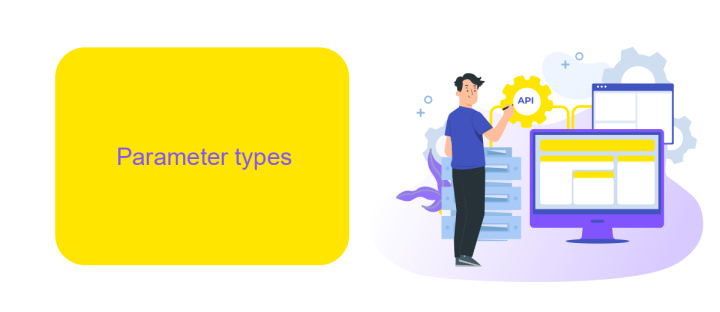Azure Automation Workflow Parameters
Azure Automation Workflow Parameters are essential components for managing and automating tasks within the Azure ecosystem. By utilizing these parameters, users can create dynamic, reusable workflows that streamline processes and enhance efficiency. This article delves into the fundamentals of Azure Automation Workflow Parameters, providing insights on how to effectively leverage them to optimize your cloud operations.
Parameters
In Azure Automation, workflow parameters are essential for customizing and managing automation tasks effectively. These parameters allow users to input specific data when triggering workflows, ensuring that the automation processes are flexible and adaptable to varying requirements.
- Input Parameters: These are the values provided by users when initiating a workflow. They help in tailoring the automation process to specific needs.
- Output Parameters: These parameters capture the results of the workflow execution, providing valuable insights and data for further processing or reporting.
- Mandatory Parameters: Essential for workflow execution, these parameters must be provided by the user to ensure the workflow runs correctly.
- Optional Parameters: These parameters are not required for the workflow to execute but can enhance the process if provided.
For seamless integration and automation across different platforms, services like ApiX-Drive can be utilized. ApiX-Drive allows easy connection and synchronization between Azure Automation and various other applications, enhancing the efficiency and scope of your automation workflows. By leveraging such integrations, you can ensure that your automation tasks are not only efficient but also highly interoperable.
Parameter types

Azure Automation Workflow Parameters come in various types to cater to different needs and scenarios. These parameters can be broadly categorized into string, integer, boolean, datetime, and array types. Each type serves a specific function and allows users to pass the appropriate data format required for their workflows. For instance, string parameters are used for text input, while integer parameters handle numerical input. Boolean parameters are ideal for true/false conditions, datetime parameters manage date and time information, and array parameters are used for lists of items.
Additionally, when setting up integrations and automating workflows, services like ApiX-Drive can be extremely beneficial. ApiX-Drive offers a seamless way to connect and configure various applications and services, enhancing the overall functionality of Azure Automation. By leveraging ApiX-Drive, users can automate data transfer and synchronization between different systems, ensuring that workflows run smoothly and efficiently. This integration capability simplifies complex automation tasks, making it easier for users to manage their workflows with minimal effort.
Parameter usage

Azure Automation Workflow Parameters are essential for defining and controlling the flow of automation tasks. They allow users to input values that can be used within the workflow, ensuring that the automation process is both dynamic and flexible. Proper utilization of parameters can significantly enhance the efficiency of your automation scripts.
- Define Parameters: Start by defining the necessary parameters in your workflow. This can be done through the Azure portal or by using PowerShell scripts. Ensure that each parameter has a unique name and an appropriate data type.
- Pass Values: When triggering the workflow, pass the required values for each parameter. This can be done manually or through integrated services like ApiX-Drive, which can automate the data transfer from various sources into your Azure Automation workflows.
- Use Parameters: Within your workflow scripts, reference the parameters to control the execution flow. This can include conditional logic, loops, and data manipulation based on the input values.
By effectively using parameters, you can create more adaptable and maintainable automation workflows in Azure. Services like ApiX-Drive can further streamline this process by automating the data input, ensuring seamless integration with other systems and applications.
Parameter best practices

When working with Azure Automation Workflow Parameters, it's essential to follow best practices to ensure efficient and maintainable automation processes. Proper parameter management can significantly enhance the flexibility and reusability of your workflows.
Firstly, always provide clear and descriptive names for your parameters. This helps in easily identifying their purpose and reduces the chances of errors. Secondly, use default values wisely to avoid unnecessary failures and to provide a fallback option for your workflows.
- Use descriptive names for parameters.
- Set appropriate default values.
- Group related parameters together.
- Validate parameter inputs to ensure data integrity.
- Document each parameter's purpose and usage.
Additionally, consider leveraging integration services like ApiX-Drive to streamline the management of your parameters across different systems. ApiX-Drive can automate data transfer and synchronization, ensuring that your parameters are always up-to-date and consistent. By following these best practices, you can create robust and scalable automation workflows in Azure.
- Automate the work of an online store or landing
- Empower through integration
- Don't spend money on programmers and integrators
- Save time by automating routine tasks
Conclusion
In conclusion, understanding and effectively utilizing Azure Automation Workflow Parameters can significantly enhance the efficiency and manageability of your automated processes. By leveraging these parameters, you can create more dynamic and flexible workflows that adapt to varying inputs and conditions, thus streamlining operations and reducing manual intervention.
Moreover, integrating Azure Automation with services like ApiX-Drive can further extend its capabilities, enabling seamless data transfer and synchronization across multiple platforms. This integration allows for a more cohesive and automated environment, ensuring that your workflows remain consistent and up-to-date. Embracing these tools and techniques will not only optimize your automation strategies but also pave the way for more scalable and resilient IT solutions.
FAQ
What are parameters in Azure Automation workflows?
How do I define parameters in an Azure Automation runbook?
Can I use default values for parameters in Azure Automation?
How do I pass parameters when starting a runbook?
What are some best practices for managing parameters in Azure Automation?
Apix-Drive is a universal tool that will quickly streamline any workflow, freeing you from routine and possible financial losses. Try ApiX-Drive in action and see how useful it is for you personally. In the meantime, when you are setting up connections between systems, think about where you are investing your free time, because now you will have much more of it.


